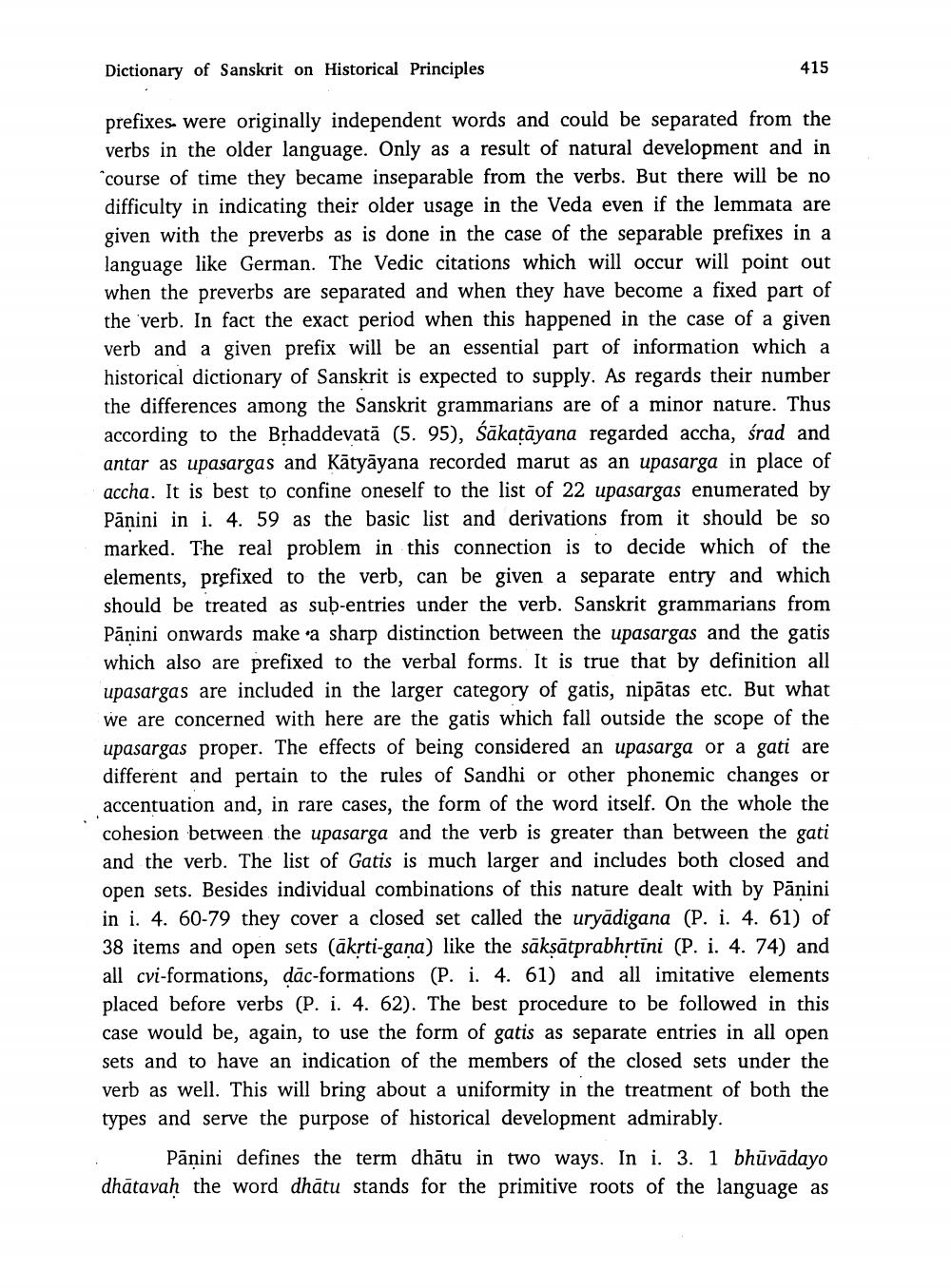________________
Dictionary of Sanskrit on Historical Principles
415
prefixes. were originally independent words and could be separated from the verbs in the older language. Only as a result of natural development and in course of time they became inseparable from the verbs. But there will be no difficulty in indicating their older usage in the Veda even if the lemmata are given with the preverbs as is done in the case of the separable prefixes in a language like German. The Vedic citations which will occur will point out when the preverbs are separated and when they have become a fixed part of the 'verb. In fact the exact period when this happened in the case of a given verb and a given prefix will be an essential part of information which a historical dictionary of Sanskrit is expected to supply. As regards their number the differences among the Sanskrit grammarians are of a minor nature. Thus according to the Bșhaddevatā (5. 95), Sākatāyana regarded accha, śrad and antar as upasargas and Kātyāyana recorded marut as an upasarga in place of accha. It is best to confine oneself to the list of 22 upasargas enumerated by Panini in i. 4. 59 as the basic list and derivations from it should be so marked. The real problem in this connection is to decide which of the elements, prefixed to the verb, can be given a separate entry and which should be treated as sub-entries under the verb. Sanskrit grammarians from Pānini onwards make a sharp distinction between the upasargas and the gatis which also are prefixed to the verbal forms. It is true that by definition all upasargas are included in the larger category of gatis, nipātas etc. But what we are concerned with here are the gatis which fall outside the scope of the upasargas proper. The effects of being considered an upasarga or a gati are different and pertain to the rules of Sandhi or other phonemic changes or accentuation and, in rare cases, the form of the word itself. On the whole the cohesion between the upasarga and the verb is greater than between the gati and the verb. The list of Gatis is much larger and includes both closed and open sets. Besides individual combinations of this nature dealt with by Pānini in i. 4. 60-79 they cover a closed set called the uryādigana (P. i. 4. 61) of 38 items and open sets (ākrti-gana) like the sāksātprabhrtini (P. i. 4. 74) and all cvi-formations, dāc-formations (P. i. 4. 61) and all imitative elements placed before verbs (P. i. 4. 62). The best procedure to be followed in this case would be, again, to use the form of gatis as separate entries in all open sets and to have an indication of the members of the closed sets under the verb as well. This will bring about a uniformity in the treatment of both the types and serve the purpose of historical development admirably.
Pānini defines the term dhātu in two ways. In i. 3. 1 bhūvādayo dhātavah the word dhātu stands for the primitive roots of the language as




